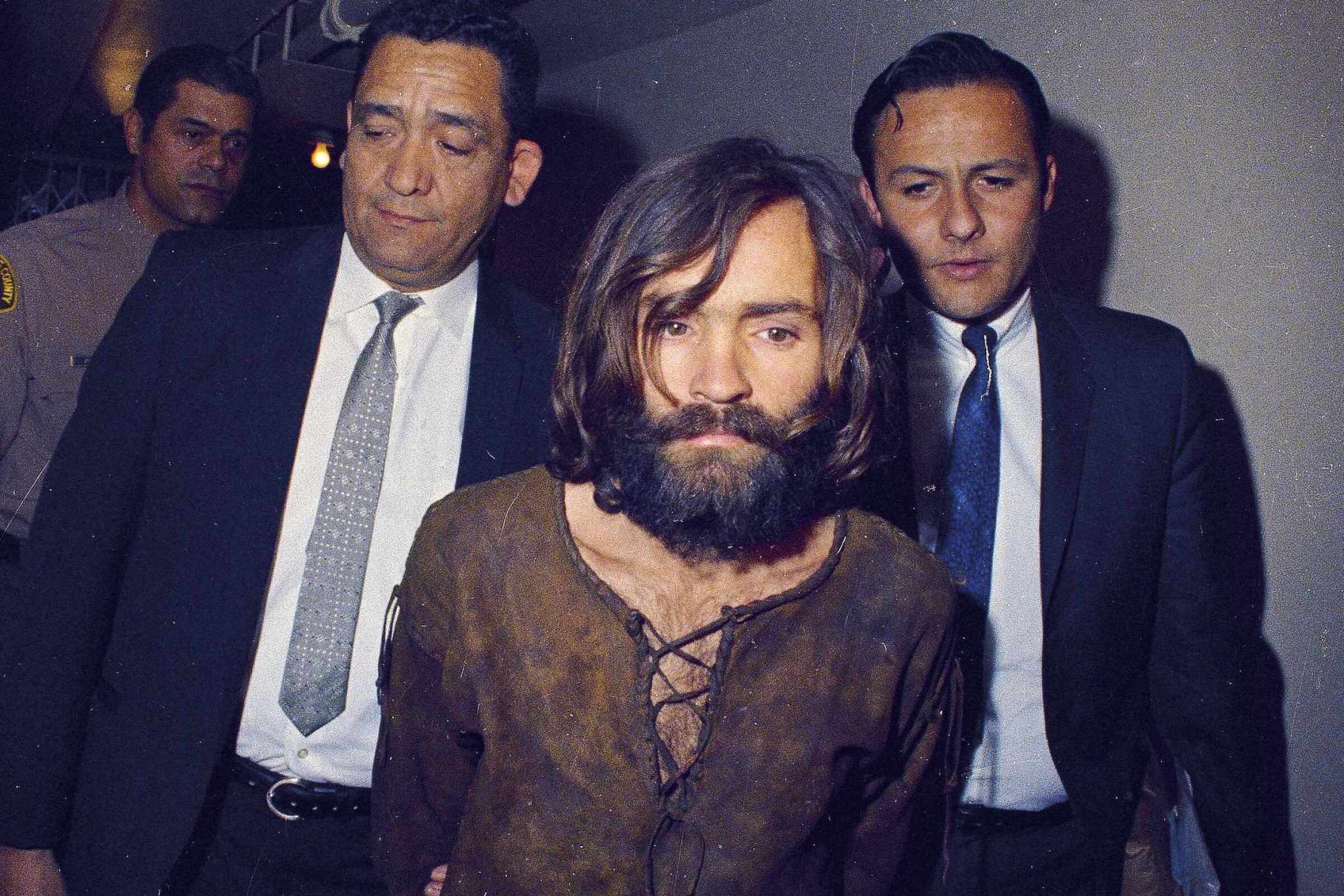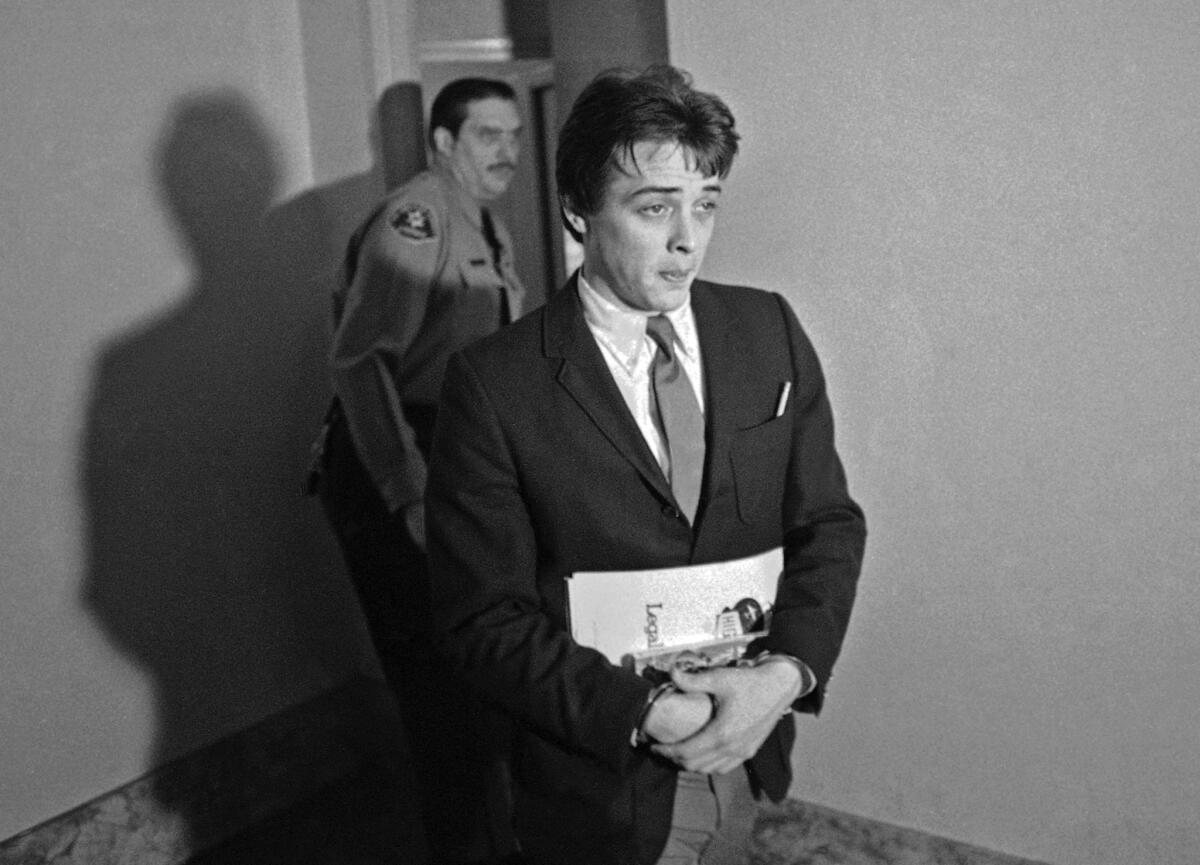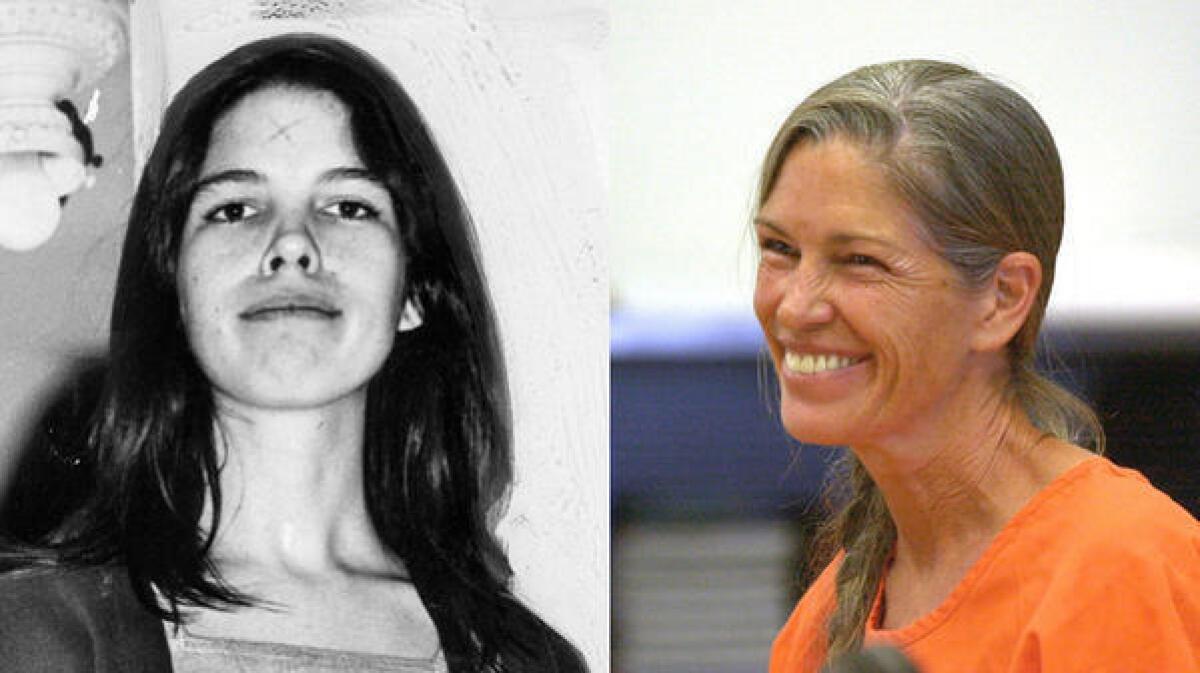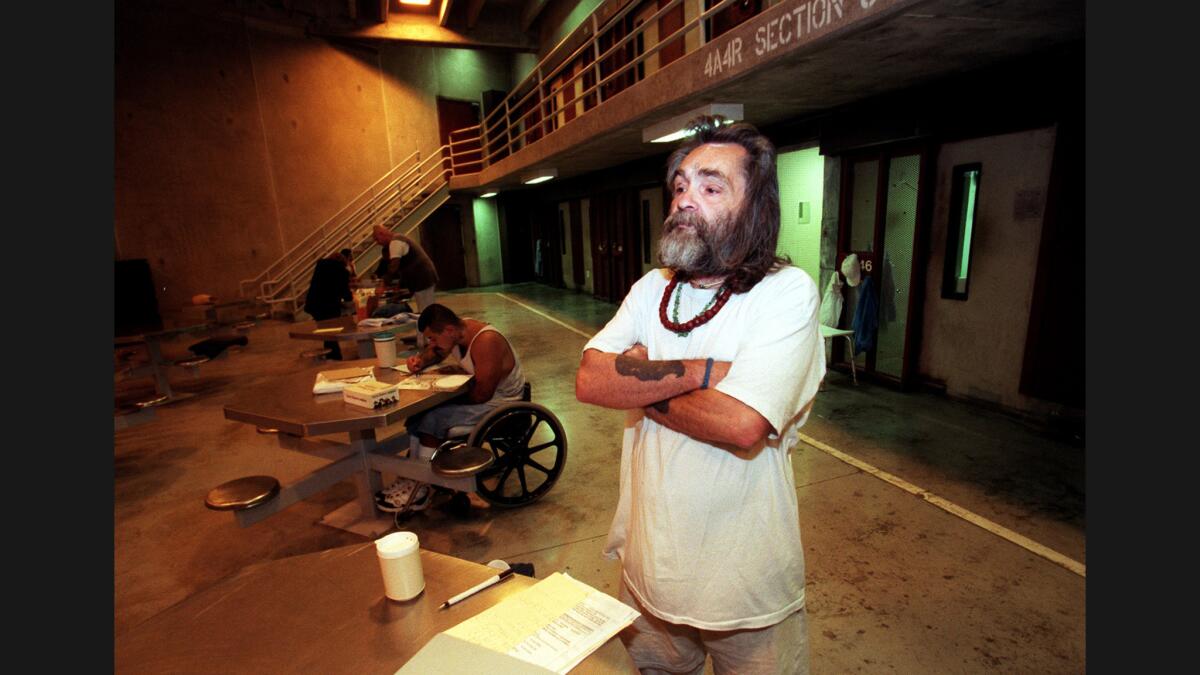Newsletter
Sign up for Essential California
The most important California stories and recommendations in your inbox every morning.
You may occasionally receive promotional content from the Los Angeles Times.

Charles Manson was born Nov. 12, 1934, to an impoverished 16-year-old single mother named Kathleen Maddox, who, when she wasn’t in prison, lived a peripatetic life, traveling through the Midwest with her son in tow. He spent years in foster and group homes, reform schools and, eventually, prison, which hastened his transformation from prey into predator.
During his stays in prison, Manson honed his quasi-spiritual philosophy and his music. He also took courses based on Dale Carnegie’s “How to Win Friends and Influence People,” which “seemed to formally codify all the instinctive ways Charlie had manipulated people since childhood,” according to “Manson: The Life and Times of Charles Manson” by Jeff Guinn.
When he was released from prison on Terminal Island in March 1967, Manson was 32 and looking at an empty future. That’s when he made his way to the Haight-Ashbury district in San Francisco and started to assemble his notorious “family.” Mary Brunner, whom he met in the spring, was his first recruit. In the next couple of years, the family expanded with the addition of several women, including Lynette “Squeaky” Fromme, Patricia Krenwinkel, Linda Kasabian, Leslie Van Houten and Susan Atkins.
The family travels to Los Angeles, living for a time in Topanga Canyon while Manson tries to make connections in the music world. His first studio session is a failure.
Manson continues to pursue a music career and continues to fail. The family lives at the home of Beach Boys drummer Dennis Wilson for a while and later finds a home at the Spahn Movie Ranch near Chatsworth.
Charles Manson’s son, Michael Brunner, speaks to a reporter about his father’s legacy and notoriety for the first time in 26 years.
The Beatles release “The White Album,” with a track titled “Helter Skelter.” Manson becomes obsessed with the album and co-opts the title of the song for his own purposes. “Something called Helter Skelter would set off a battle,” Guinn wrote, and Manson told his followers that he would save them from worldwide chaos.

Accompanied by family members, Manson follower Bobby Beausoleil kills acquaintance Gary Hinman and writes “POLITICAL PIGGY” on a wall with Hinman’s blood. About two weeks later, Beausoleil is booked on murder charges.
Atkins, Krenwinkel, Kasabian and Charles “Tex” Watson go to the Benedict Canyon home of Sharon Tate and Roman Polanski and kill the pregnant 26-year-old actress. Also killed are Abigail Folger, Voytek Frykowski, Jay Sebring and Steven Parent. Atkins writes the word “PIG” on the front door, using a towel dipped in Tate’s blood.
Van Houten, Watson and Krenwinkel are dispatched to kill Leno and Rosemary LaBianca at their Los Feliz home. They write “RISE” and “DEATH TO PIGS” and a misspelling of the Beatles song, “HEALTER SKELTER,” in blood on the walls of the house.
Manson relocates to Death Valley, where he and some of his followers are arrested in October — on suspicion of auto theft.
Manson, Watson, Atkins, Kasabian and Krenwinkel are indicted on murder and conspiracy charges in the Tate killings; they are also indicted, along with Van Houten, in the LaBianca murders. Kasabian eventually becomes a star witness for the prosecution.
The trial starts for Manson, Atkins, Krenwinkel and Van Houten.
A jury finds all of the defendants guilty. A few weeks later, Manson, Krenwinkel and Atkins are sentenced to death. Van Houten is sentenced to death in connection with the LaBianca murders. Watson is tried separately in 1971 and is also found guilty and sentenced to death. All of the death sentences are commuted to life in prison after California abolishes the death penalty in 1972.
Van Houten’s conviction is overturned. She is later retried — twice. At the third trial, she is convicted of two counts of murder and one count of conspiracy to commit murder.

Atkins dies in prison at 61.

Manson dies at 83 after decades in prison.
Since 1991, Beausoleil, Krenwinkel, Watson and Van Houten have repeatedly been denied parole.
Sign up for Essential California
The most important California stories and recommendations in your inbox every morning.
You may occasionally receive promotional content from the Los Angeles Times.